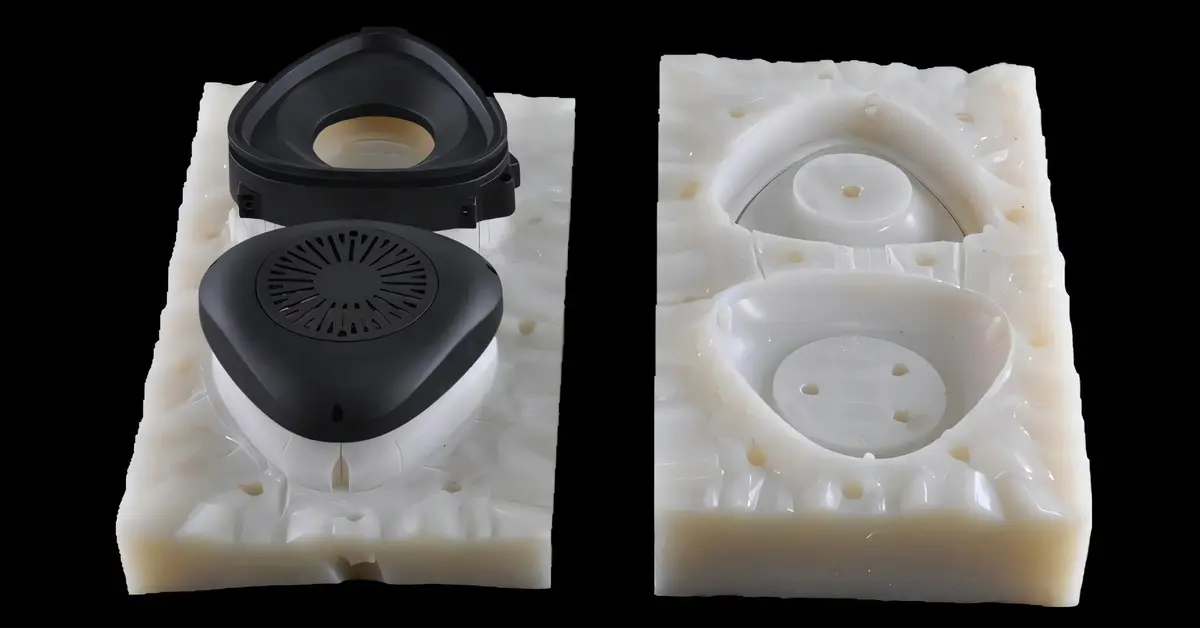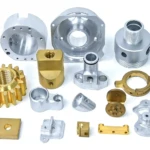Vacuum Casting Advantages: A Comprehensive Overview of Vacuum Casting for Various Industries
Vacuum casting is a manufacturing process that has gained considerable attention in various industries for its ability to create highly accurate prototypes, molds, and parts in relatively small to medium batches. This process, which involves the use of a vacuum to remove air and gases from a mold, offers numerous advantages in terms of material selection, production efficiency, and cost-effectiveness. In this blog post, we will explore the key advantages of vacuum casting, its applications across different industries, and the specific benefits it offers to manufacturers.
What is Vacuum Casting?
Vacuum casting, also known as urethane casting or vacuum molding, is a technique used to create prototypes, models, and short-run production parts by pouring liquid plastic or resin into a mold under vacuum pressure. The mold is typically made of silicone, which allows it to replicate the shape of the original part with high precision. Once the resin is poured into the mold, the vacuum environment eliminates air bubbles, ensuring that the material fills the cavity uniformly and accurately.
The vacuum pressure used in this process ensures that even the smallest details and fine features of the part are accurately reproduced. After curing, the part is removed from the mold, and depending on the requirements, further post-processing such as trimming, painting, or finishing can be performed.
Analyzing the Current Status of Vacuum Casting
As manufacturing technology advances, the demand for rapid prototyping, low-volume production, and high-quality parts has also grown. Vacuum casting has become a crucial solution to meet these demands, as it allows manufacturers to quickly produce detailed prototypes and functional parts with a wide range of materials. The key factor driving the growth of vacuum casting is its cost-effectiveness compared to traditional manufacturing methods, such as injection molding or CNC machining, especially for smaller production runs.
The global market for vacuum casting is witnessing an upward trend, particularly in industries like automotive, aerospace, medical devices, and consumer electronics. Companies are increasingly turning to vacuum casting to reduce lead times, improve product quality, and achieve lower production costs for small to medium quantities.
Vacuum Casting Advantages
There are several compelling reasons why manufacturers opt for vacuum casting over other traditional manufacturing methods. Below, we will delve into some of the most prominent advantages that vacuum casting offers:
1. Rapid Prototyping and Shorter Lead Times
One of the most significant benefits of vacuum casting is its ability to produce prototypes quickly. Traditional manufacturing processes like injection molding require the creation of expensive molds, which can take weeks or even months to fabricate. In contrast, vacuum casting can be completed in a matter of days, which is particularly beneficial for industries that require fast design iterations.
The time saved in prototype development enables manufacturers to accelerate their product development cycles, allowing them to bring new products to market faster.
2. Cost-Effective for Small to Medium Production Runs
Vacuum casting is an ideal solution for producing small to medium quantities of parts at a lower cost compared to conventional manufacturing methods. Since the process uses silicone molds, which are relatively inexpensive to create, the initial tooling costs are much lower than the high tooling costs associated with injection molding or die-casting.
This makes vacuum casting especially attractive for industries where low-volume production runs are necessary, such as for product testing, limited edition runs, or small-scale production batches.
3. High Precision and Detail
The vacuum casting process ensures that fine details and intricate features of the original model are faithfully reproduced in the final product. The use of vacuum pressure during the molding process ensures that air pockets and bubbles do not distort the mold, allowing for high levels of accuracy. This is especially important when creating parts that require tight tolerances or need to be tested for fit and function before mass production.
4. Wide Range of Material Options
Vacuum casting supports a diverse range of materials, including various types of plastics, resins, and elastomers. Depending on the requirements of the application, manufacturers can select from materials that offer specific properties such as flexibility, rigidity, high-temperature resistance, or electrical conductivity.
Materials that are commonly used in vacuum casting include:
- Polyurethane (PU)
- Epoxy resins
- Silicone rubber
- ABS (Acrylonitrile Butadiene Styrene)
- Polycarbonate (PC)
The flexibility in material selection makes vacuum casting an attractive choice for industries such as automotive, aerospace, medical devices, and consumer goods.
5. Low Tooling Costs
In traditional manufacturing processes, creating molds is often a costly and time-consuming affair, especially for complex or low-volume parts. However, with vacuum casting, the mold is made from silicone, which can be easily and quickly fabricated. This dramatically reduces the initial investment in tooling, making it an excellent choice for small production runs.
Additionally, silicone molds can be reused multiple times, further reducing costs for subsequent production batches.
6. Ability to Produce Complex Geometries
Vacuum casting can handle complex geometries that may be difficult or impossible to achieve with other manufacturing methods. The flexible nature of the silicone mold enables intricate designs with undercuts, thin walls, and fine features to be accurately replicated. This is crucial for industries where design innovation and product aesthetics are critical.
7. Post-Processing Capabilities
After casting, the parts can be further refined through various post-processing techniques, such as trimming, painting, polishing, and adding functional coatings. These finishing services are essential for producing parts that meet the aesthetic or functional requirements of the final application.
Many vacuum casting service providers, such as Great Light, offer one-stop finishing services to streamline the production process and ensure that parts are ready for use directly after casting.
Applications of Vacuum Casting in Various Industries
The versatility of vacuum casting makes it applicable across many industries. Let’s explore some of the sectors where vacuum casting advantages are most prominently applied.
1. Automotive Industry
In the automotive sector, vacuum casting is used extensively for prototype development, testing, and the production of small batches of parts. Manufacturers use vacuum casting to create functional prototypes for vehicle components such as interior parts, bumpers, and engine components. This process allows automotive designers to test the form, fit, and function of parts before moving to full-scale production.
2. Aerospace Industry
Aerospace companies use vacuum casting to create lightweight, high-precision parts for aircraft and spacecraft. Components such as engine parts, interior fixtures, and structural components can be manufactured using vacuum casting to meet the stringent quality and performance standards required in the aerospace industry.
3. Medical Devices
In the medical device industry, vacuum casting is used to create prototypes for new medical equipment, implants, and instruments. The high level of detail and the ability to use biocompatible materials make vacuum casting a suitable choice for medical applications that require precision and reliability.
4. Consumer Electronics
The consumer electronics industry also benefits from the vacuum casting process, particularly for producing prototypes of devices like smartphones, wearables, and home appliances. Vacuum casting allows designers to quickly iterate on product designs, testing form factors, and features before final production.
5. Art and Design
Artists and designers use vacuum casting to replicate sculptures, models, and other works of art. The process enables the reproduction of fine details and textures, which is crucial for creating high-quality replicas or limited-edition pieces.
Material Properties and Performance
The materials used in vacuum casting must meet specific performance requirements for the parts being produced. Below is a general overview of the types of materials that can be processed using vacuum casting, along with their respective advantages and disadvantages.
| Material | Properties | Advantages | Disadvantages |
|---|---|---|---|
| Polyurethane (PU) | Flexible, durable, available in a range of hardness | Excellent for functional prototypes, cost-effective | Limited high-temperature resistance |
| Silicone Rubber | High flexibility, excellent for molding | Ideal for flexible parts, rubber-like qualities | Less suitable for rigid parts |
| Epoxy Resin | High strength, durable, good for molds | High resistance to heat, stable dimensions | Can be brittle under stress |
| ABS | Rigid, impact-resistant, easy to mold | Strong, tough material, good for structural parts | Poor UV resistance, prone to cracking under stress |
| Polycarbonate | Transparent, high impact strength | High clarity, good for parts requiring transparency | Can be prone to scratches, difficult to mold |
Conclusion: The Benefits of Vacuum Casting
Vacuum casting offers numerous advantages for manufacturers, particularly when rapid prototyping, low-volume production, and high-precision parts are required. Its ability to use a wide range of materials, coupled with the low tooling costs and fast turnaround times, makes it a versatile and cost-effective solution for many industries.
Whether in automotive, aerospace, medical devices, or consumer electronics, vacuum casting provides the flexibility, precision, and speed necessary to meet the evolving demands of modern manufacturing.
Great Light has built a strong reputation in the vacuum casting industry, specializing in producing small, medium, and large batches of orders, with the added benefit of one-stop finishing services. With quick turnaround times and access to a variety of high-performance materials, Great Light is committed to providing manufacturers with the best solutions for their casting needs.
If you’re looking to produce high-quality vacuum cast parts, now is the time to explore how vacuum casting can benefit your projects.
Call to Action:
Explore the many advantages of vacuum casting for your next project with Great Light. Contact us today to discuss your requirements and get started with high-quality, cost-effective production solutions!

















